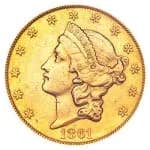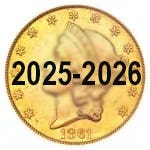Buffalo not meeting top grade demands
You might not realize it, but the 1924-S Buffalo nickel is one of the best Buffalo nickels among the regular dates.
You might not realize it, but the 1924-S Buffalo nickel is one of the best Buffalo nickels among the regular dates. That says a great deal since we?ve recently learned that a number of Buffalo nickels are much tougher than anyone believed.
The 1924-S, with a mintage of 1,437,000, is a better date in lower grades. Its current G-4 price is $16.50, which is not surprising. If anything, the price is on the low side since there are not strong supplies.
The Buffalo nickel supplies were greatly influenced by the fact that the coins lost their dates. It was not simply one coin here and another there. The date was the highest part of the design on the obverse. ?FIVE CENTS? was the highest part of the design on the reverse. Concern that the denomination would wear off the design caused the animal to be placed on a flat line. No one seemed to worry about the date on the obverse even though it was possibly more vulnerable to wear.
We will never know how many of the 1924-S or others that lost their dates due to wear, but it was definitely a high number. By the 1950s there were rolls being offered at a small premium over face of dateless Buffalo nickels. The idea was that one could use date restoring compound and at least have filler examples to complete a set.
Buffalo nickels, especially those of the branch mints at Denver and San Francisco, had another problem. It occurred especially in the 1920s, and it was not really discovered then. This problem involved Mint State examples. They were horribly made in many cases. The strikes are bad and much of the detail is lacking. Even though the coins are Mint State, they simply will not come back from grading services with the grades one might want.
We were unaware of the problem for decades. It is possible that some collector or dealer might have observed that some Buffalo nickels appeared somewhat flat. For decades the basic standard when it came to Buffalo nickels and most other coins was whether or not the coin was Mint State. The idea of MS-65 did not even appear until the late 1940s. Then it took additional decades before it was applied to issues other than early coppers. The Buffalo nickel, including the 1924-S, continued to be Mint State or not Mint State.
It is only in the past few decades that grades like MS-65 have been used for Buffalo nickels. Surprisingly, we are learning that if you apply strict standards to Buffalo nickels, the supplies are poor. This is especially true of branch mint dates from the 1920s, such as the 1924-S.
The price of the 1924-S today is at $2,300 in MS-60. That reflects the fact that there was no saving of Buffalo nickels back in the 1920s.
In the case of an MS-65 the 1924-S today lists for $13,500. That does not make it the key MS-65 Buffalo nickel but it does make it a better date.
The Numismatic Guaranty Corporation and Professional Coin Grading Service have about 50 combined examples of the 1924-S called at least MS-65. There is no way that 50 coins will be enough to meet the demand for top grade Buffalo nickels. The 1924-S is almost certain to rise in price in MS-65 and likely to rise in all grades. What else would we expect for coins in a series that seems set to continue to increase in popularity.



